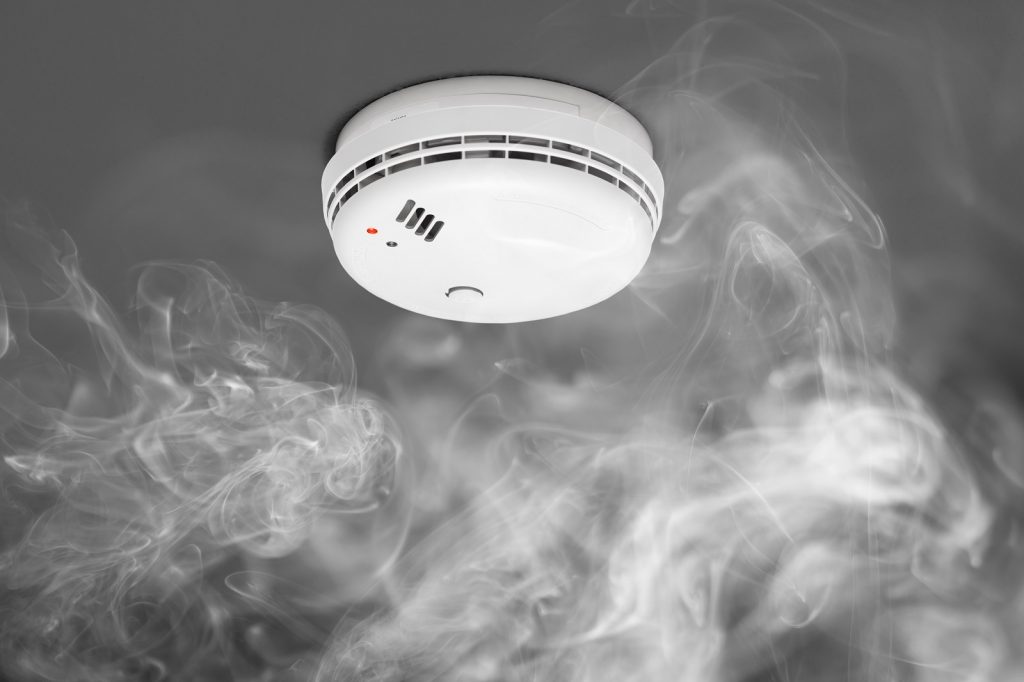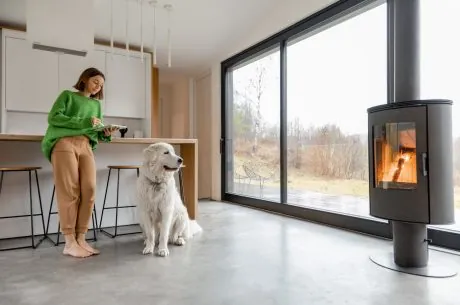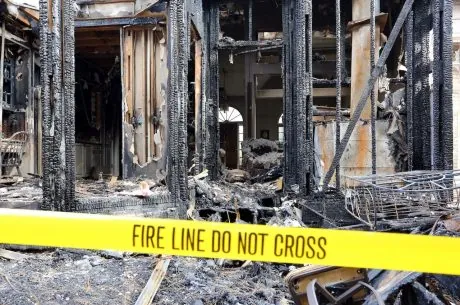Did you know that half of all home fire deaths occur in bedrooms? That’s also where most electrical fires start too. However, you can easily prevent bedroom fires by following some essential safety tips.
Bedroom Fire Safety Tips
Electrical Safety Tips
- Avoid Running Cords Under Rugs or Furniture: Don’t run electric cords under the bed or carpeting. Don’t trap cords against a wall where heat can build up.
- Keep Cords Tangle-Free: Keep cords untangled to allow heat to dissipate properly.
- Avoid Overloading Extension Cords: Never overload an extension cord as it can cause overheating and potentially start a fire.
Space Heater Safety
Space heaters are a convenient way to warm up specific areas of your home, but they also pose significant fire hazards if not used properly. To ensure safety, always follow these guidelines:
- Constant Supervision: Never leave a space heater unattended. Always turn it off when leaving the room or going to sleep.
- Proper Placement: Place space heaters on a flat, stable surface to prevent them from tipping over. Keep them at least three feet away from flammable items such as curtains, furniture, bedding, and clothing.
- Avoid High-Traffic Areas: Position space heaters away from high-traffic areas and doorways and closed doors to minimize the risk of accidental tip-overs.
- Regular Inspection: Inspect your space heater regularly for any signs of damage, such as frayed cords or broken parts. If you notice any issues, stop using the heater immediately and consider replacing it.
- Follow Manufacturer Instructions: Always follow the manufacturer’s instructions for operation and maintenance to ensure safe use.
- Use with Caution Around Children and Pets: Keep space heaters out of reach of children and pets to prevent accidents and burns.
Electrical Outlet and Switch Safety
- Install AFCIs: Install arc fault circuit interrupters (AFCIs) to prevent fires in electrical switches. They automatically shut off the circuit when an unintentional discharge of electricity occurs.
- Use TRRs: Install tamper-resistant receptacles (TRRs) in all rooms if you have children. These devices prevent them from inserting foreign objects like hairpins into the outlet.
Charging Devices Safely
Charging electronic devices is a daily routine, but it’s crucial to be mindful of where and how you charge them to prevent fire hazards. Here are some important safety tips to follow:
- No Charging Under Blankets or Pillows: Never place devices that are charging under bedding, blankets, or pillows. These materials can trap heat and cause the device to overheat, leading to a potential fire.
- Keep Devices on a Hard Surface: Always place charging devices on a hard, flat surface like a nightstand or desk. This allows heat to dissipate properly and reduces the risk of overheating.
- Avoid Charging on Soft Furnishings: Refrain from charging devices on soft furnishings like couches, beds, or carpets. These surfaces can insulate heat and increase the likelihood of a fire.
- Monitor Laptops on Beds: Be cautious when using laptops on beds or soft surfaces. The ventilation openings on laptops can become blocked, causing the device to overheat. If you must use a laptop in bed, place it on a hard, flat surface like a lap desk to ensure proper airflow.
- Unplug When Not in Use: Make it a habit to unplug devices once they are fully charged. This not only saves energy but also reduces the risk of electrical fires.
- Use Approved Charging Accessories: Always use approved charging cables and adapters that are compatible with your device. Low-quality or counterfeit chargers can pose significant safety risks.
Electric Blanket and Warmer Safety
Electric blankets and warmers can provide comfortable warmth during cold nights, but they also come with potential safety hazards. To ensure safe use, follow these essential guidelines:
Use Approved Blankets:
- Laboratory Approval: Always use electric blankets and warmers that have been approved by a recognized safety laboratory, such as UL (Underwriters Laboratories) or ETL (Intertek’s ETL SEMKO). These approvals indicate that the product has been tested and meets safety standards.
- Purchase from Reputable Sources: Buy electric blankets from reputable retailers to ensure you are getting a quality product that meets safety requirements.
Proper Use:
- Avoid Folding: Never fold electric blankets or warmers when they are in use or still warm. Folding can damage the internal wiring, leading to overheating and potential fire hazards. When storing, fold them loosely or roll them up as recommended by the manufacturer.
- No Overnight Use: Avoid sleeping with an electric blanket turned on throughout the night. Instead, use it to warm the bed before sleep and then turn it off. Prolonged use can increase the risk of overheating and fires.
- Regular Inspection: Regularly check your electric blanket for signs of wear and tear, such as frayed wires, scorch marks, or damaged fabric. If you notice any issues, stop using the blanket immediately and consider replacing it.
- Follow Manufacturer Instructions: Always follow the manufacturer’s instructions for operation, maintenance, and storage. Different brands and models may have specific safety guidelines.
- Avoid Contact with Water: Keep electric blankets and warmers away from water to prevent electric shock. Do not use them if they have been exposed to moisture or water.
- No Pets or Heavy Objects: Avoid placing heavy objects on electric blankets or allowing pets to sleep on them. The added weight can damage the wiring and pose a safety risk.
- Turn Off When Not in Use: Make it a habit to turn off and unplug electric blankets and warmers when they are not in use. This not only saves energy but also reduces the risk of electrical fires.
General Fire Safety Tips
- Keep Flammable Objects Away from Heat Sources: Keep flammable objects at least three feet away from heat sources, such as space heaters, candles, and electronics.
- Safe Candle Use: Keep lit candles away from combustible objects like bedding, curtains, and paper. Consider replacing burning candles with battery-operated flameless candles.
- Use Fire-Safe Mattresses: Use only mattresses that meet the 2007 Federal Mattress Flammability Standard.
Smoking Safety
- Don’t Smoke in Bed: Don’t smoke in bed — you might fall asleep with a lit cigarette in your hand and it could catch fire. Use fire-safe cigarettes as they extinguish more quickly.

Smoke Alarm Safety
- Install Smoke Alarms: Install smoke alarms and smoke detectors inside and outside each bedroom.
- Regular Testing: Test smoke alarms monthly and replace them every 10 years.
- Replace Batteries: Replace batteries once a year to ensure they function correctly.
Fire Escape Planning
- Create a Fire Escape Plan: Make sure each room has two exits.
- Practice Fire Drills: Practice your home fire drill with everyone in the home at night and during the day twice a year. This ensures all family members know how to exit safely in case of a fire.
Call Your Local PuroClean Office For Smoke and Fire Damage Restoration Services
The misuse of electric devices can result in home fires, so check out more Home Electrical Safety Tips. For more fire safety tips, read How to Prevent Home Fires: 12 Tips to Stay Safe. For professional fire damage repair or smoke remediation services, contact your local PuroClean office.



